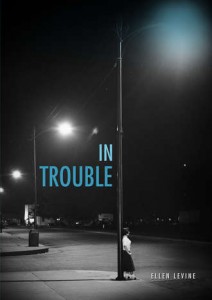Peter Marino’s thoughtful review of Ruth and the Green Book made me think of the 1950s—a time many people idealize as one of harmony and prosperity. Yet much of this harmony and prosperity was achieved through the exclusion and exploitation of African Americans whose access to the American Dream was closed off by Jim Crow. In both the South and the North, whites benefited from the low-wage labor of their black neighbors, much as white South Africans lived an easier and more prosperous life because blacks were forced to do the dirty work for subsistence wages.
 Legal constraints also affected women and girls in the United States in the 1950s. In addition to being shut out of the best-paying careers and forced to depend on their husbands, women had little control over their own bodies. Contraception and pregnancy tests required proof of marriage; abortion was strictly forbidden
Legal constraints also affected women and girls in the United States in the 1950s. In addition to being shut out of the best-paying careers and forced to depend on their husbands, women had little control over their own bodies. Contraception and pregnancy tests required proof of marriage; abortion was strictly forbidden
Ellen Levine’s new YA novel In Trouble (Lerner/Carolrhoda, 2011) portrays with honesty and accuracy the underside of the 1950s, so much so that the author got “in trouble” when she tried to find a publisher for this sequel to her acclaimed middle grade novel about McCarthyism, Catch a Tiger by the Toe (Viking, 2005). The six-year interval between the two novels is perhaps a clue that the new one was a hard sell in these increasingly reactionary times; Levine describes her struggle to find a publisher in an article for Hunger Mountain: http://www.hungermtn.org/when-along-with-her-characters-an-author-gets-in-trouble/. Why the difficulty? Because Levine’s teenage protagonist obtains an illegal abortion.
In Trouble takes place in 1956, three years after Catch a Tiger by the Toe. Jamie Morse is 16 and her father has just been released from prison for defying Senator McCarthy’s anti-Communist witch hunt. Jamie’s best friend, Elaine, has recently moved from the Bronx to Long Island, but Elaine has a big problem—she is pregnant with her boyfriend’s child and her boyfriend won’t answer her letters or return her phone calls. Then Jamie herself is raped by a Beatnik acquaintance of her older cousin and misses her period twice. Jamie’s efforts to find out if she is, in fact, pregnant and to terminate the pregnancy in the socially repressive 1950s (she has to ask old friend and new boyfriend Paul to pose as her husband just to get a test) reveals the impact of the hard-won victories of the 1960s and what life for women will be like if conservative extremists have their way.
Levine avoids graphic detail in her description of either the rape or the abortion, which is performed in a clinic rather than a back alley or hotel room. As in her earlier novel she succeeds in portraying controversial politics while maintaining strong characterizations and story development. Jamie is complex and likable—still a practiced liar who wishes she could tell the truth. Elaine’s illusions about the baby’s father coming to marry her are realistic and poignant, as is Jamie’s boyfriend, Paul, forced to deal with the fact that his girlfriend has been impregnated by a rapist. Through them, readers are immersed in a time and place that may yet become a reality once more.
Disclosure: Read as an e-galley obtained from NetGalley.
3 comments for “In Trouble: The Past That May Become Our Future”